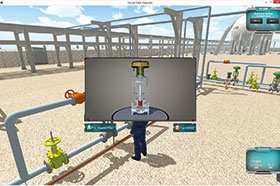

A significant shift in the world of engineering is changing the reality of online learning. There is a prevalence of computing devices being embedded into everyday objects and it is a growing and determined trend. This trend, otherwise known as the Internet of Things (IoT), means that many everyday objects have the ability to send and receive data.
It is this development which changes the dynamic in the world of engineering and has strengthened the premise for online learning. IoT is facilitating the acquisition of meaningful and practical engineering skills even when they are studied online and off-campus.
The Engineering Institute of Technology (EIT), an international college dedicated to the education and training of engineers and technicians, has been captivated by the impact that the Fourth Industrial Revolution is having on education.
For many years EIT employed the tried and tested classroom-based training model with physical laboratories lugged around the world to city venues and onto engineering sites. This was a remarkably effective venture (if somewhat cumbersome) with over 520 000 participants over 25 years. But, as online technologies began to emerge, the Dean of Engineering at EIT, Dr Steve Mackay, contemplated the changing face of education and realised that it would ultimately serve engineers well. He witnessed many in the industry being denied access to the education and training they needed because of the tyranny of distance, the responsibilities of demanding jobs and budget constraints.
Engineering tuition goes online
Mackay spent four years of extensive research, resulting in a PhD, during which he analysed the various online learning platforms and available ‘tools’. This enabled him to devise an optimal method for EIT. He settled on an innovative, live and interactive approach to teaching, where industry-experienced instructors and lecturers are streamed in to students around the world, and where they have access to high quality remote laboratories.
In traditional learning environments, students of engineering rely on physical laboratories for hands-on practical applications. Given the inextricable link between engineering and technology, the utilisation of the Internet has become a key part of modern engineering education and offers equivalence to physical delivery modes. EIT students use simulations and log into remote or virtual laboratories to ably their knowledge.
Learning through EIT means that students, wherever they are based, can access remote laboratories. They can interface with a pneumatic circuit control using a microcontroller, for example. There are also facilities involving field instruments, which include data acquisition, pumps, motors, industrial modems and routers. Sensors can also be accessed: flowmeters, ultrasonic sensors, oscilloscopes and temperature sensors.
Simulation tools allow professional development from anywhere
For demonstrating the processes and operations of real-world sites, simulations are an invaluable tool. An example of a process plant simulation, giving students access to both the operator and field technician roles, is the Simtronics DSS100 package. Using this software students can ‘walk’ through an industrial plant to tune a process loop, for instance, or diagnose a fault such as an instrument air failure or the malfunction of a valve due to feedback position error.
The simulation kits range from compressors, pumps, distillation columns, heaters and boilers. And they are realistic. With diagnostic tools rapidly becoming Internet-based, these simulations are very closely aligned with real- world plants. In fact, in many cases they are more useful as students are able to access a greater range of ‘situations’ than is possible on site.
Students are stretched in terms of identifying and remedying encountered problems and support from experienced teachers is available to assist them.
There are some significant benefits inherent to practical applications tackled online. Apart from the accessibility and flexibility they offer, the limits of equipment can be tested. In an online medium this can be done safely, something that cannot always be achieved with real equipment.
Studies show equivalence in learning material face-to-face and online. And as the technologies become increasingly sophisticated they will all but disappear. When learning reaches that juncture – where students are no longer aware of the technologies involved, but are able to interact with excellent teachers and access laboratories which ‘take them onto the worksite’ – then online education will have come of age.
The future of engineering education must have the capacity to reach all students and then prepare them for real jobs in industry. Similarly, engineering graduates must have access to opportunities that allow them to continue to develop professionally, alongside their work, throughout their careers and beyond.
For more information contact Edwina Ross, Engineering Institute of Technology, +61 89 321 1702, [email protected], www.eit.edu.au
© Technews Publishing (Pty) Ltd | All Rights Reserved